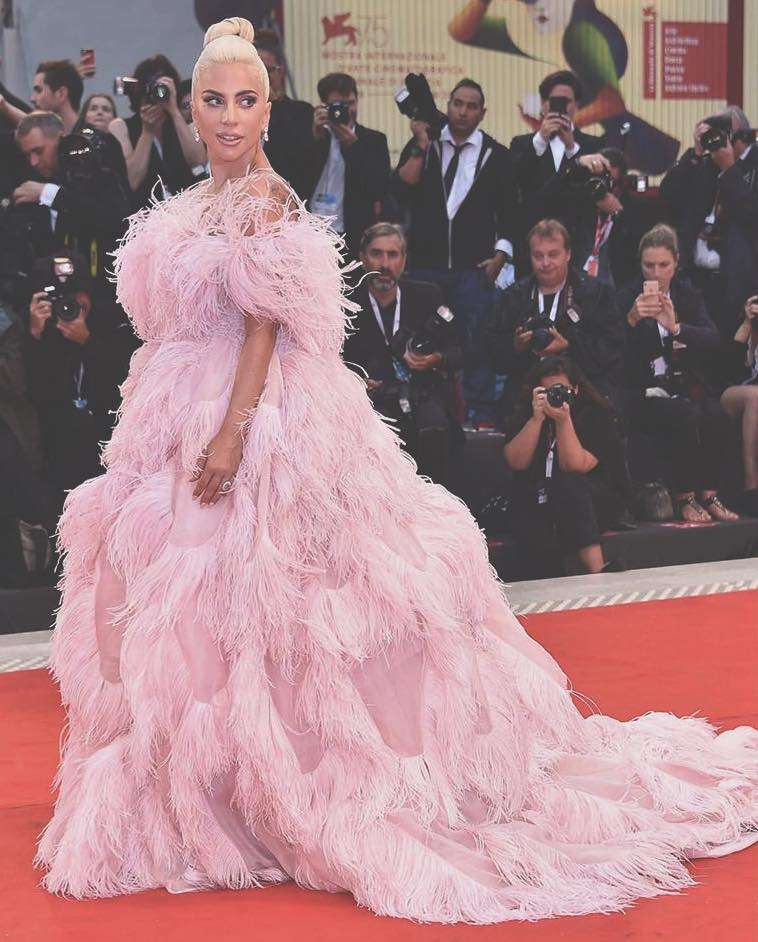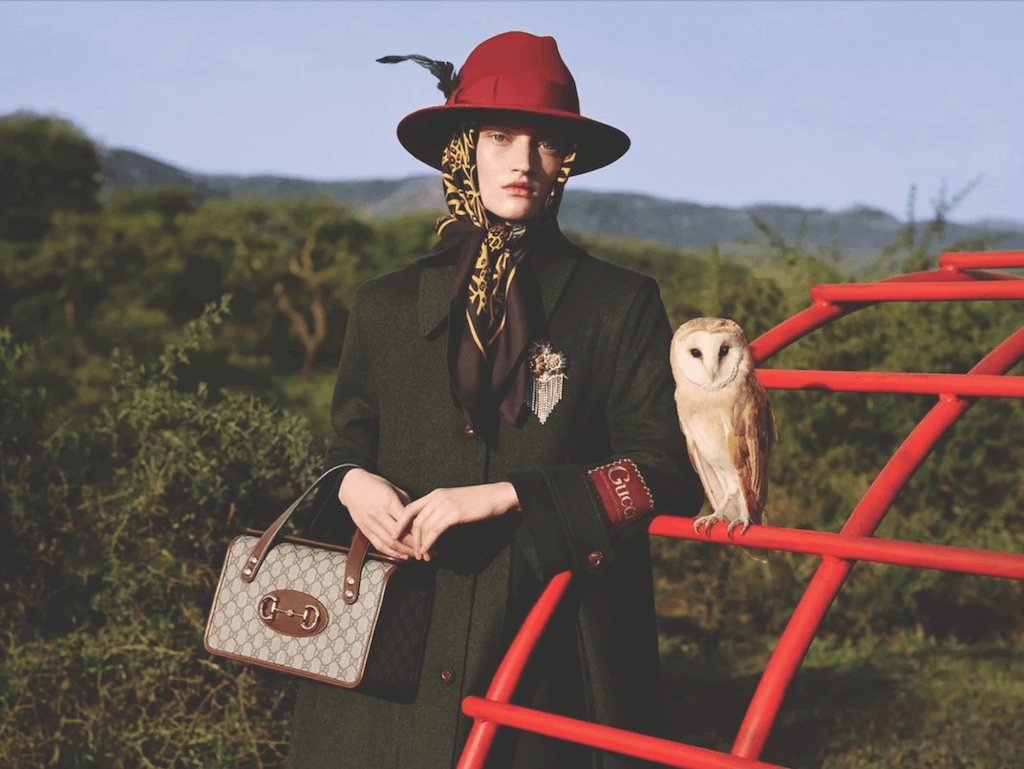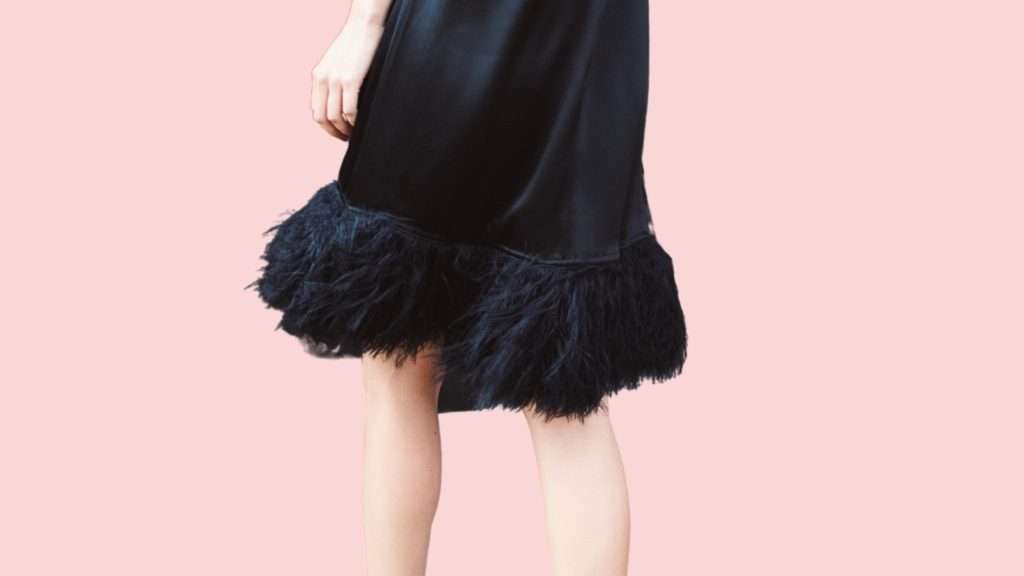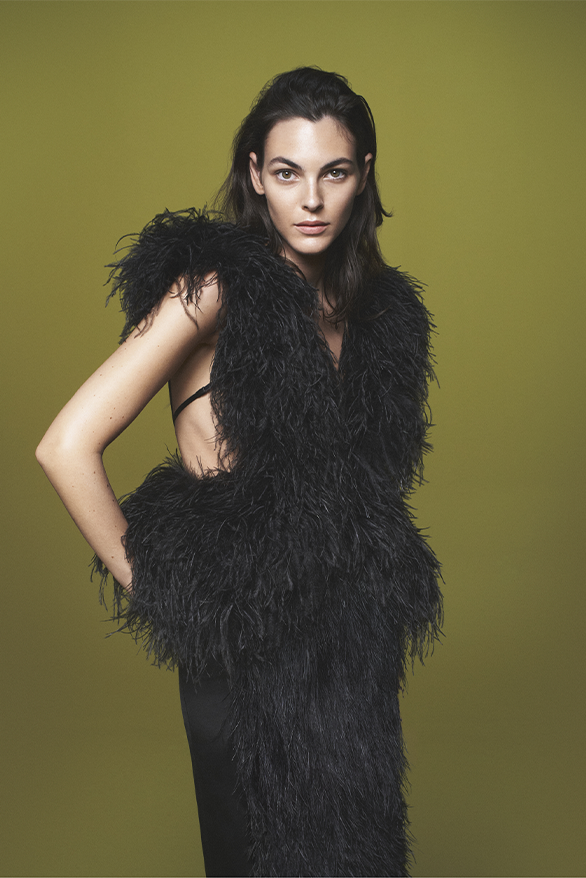Faux feathers? Not likely.
Fashion in the Victorian era was all about feathers. An impressive plume on your head gear signaled affluence and style — hence why feather hats were so popular among the upper classes in the 1800s. They were so popular that demand brought ostriches to the brink of extinction.
It’s no secret that wealthy Victorians were big fans of using animal products in their fashion. Think whalebone corsets and fur-trimmed cloaks. But feather demand was truly next level — on both sides of the Atlantic. According to World Animal Protection and Collective Fashion Justice, in 1892, approximately 5 million birds were killed for “status-driven millinery in North America alone.”
That same report — titled “Feathers are the New Fur: Cruelty in Disguise,” released last October — also confirms that in 2023, this love for feather-adorned garments is still very much alive and well, and it’s not just in the luxury space, either. Feathers are also on dresses, jackets, and tops made by some of the biggest fast fashion brands. The problem is that many consumers buying garments today often think they’re buying faux feathers — but it turns out, that’s not always the case. And even when they know they’re buying real feathers, many consumers also believe that these garments are harmless to birds. But this is far from the truth.
Brands are mislabeling real feathers as faux
According to the report, “numerous brands and retailers” in both the luxury and fast fashion spaces have been selling garments with bird feathers without accurately labeling them as such. “Some brands included images of dresses clearly trimmed with real feathers labeled as made with a ‘faux fur’ and even ‘faux feather’ trim,” it notes. Brands named in the report include Revolve, ASOS, The Iconic, Net-a-Porter, Harrods, Cettire, Boohoo, Selfridges, and Nordstrom.

“Consumers are at risk of buying something that’s not aligned with their values and contributing to an industry without being given a choice,” World Animal Protection campaign head Suzanne Milthorpe told The Street. “It almost seems like feathers are starting to replace fur and we’re really concerned by that trend. It’s really important not to replace one cruelty with another.”
The Iconic did respond to the report, pledging to work with both World Animal Protection and Collective Animal Justice to ban the use of decorative fathers on its garments. ASOS also promised to reassess its product testing strategy, to try and prevent real feathers being inaccurately labeled as faux. But, many brands, including Revolve and Nordstrom, did not respond to the report.
Cruelty in the feather industry
Feathers aren’t like fur, leather, or meat. Animals don’t have to be killed to produce them for fashion, and this might be one reason why brands and even some consumers don’t see them in the same way. The report notes that in the U.K. and Australia, only around 30 percent of people realize that feathers cannot be obtained without causing harm to animals. But, just because animals don’t have to be killed for their production, doesn’t mean they aren’t.
Investigations by the animal rights organization PETA have reported immense cruelty on ostrich farms, most of which are located in South Africa. The nonprofit notes that most of the birds are killed for their meat and skin, and their feathers are a profitable co-product of the industry.

“An eyewitness investigation of the largest ostrich slaughter companies in the world showed that workers forcibly restrain young ostriches, electrically stun them, and then cut their throats,” the organization notes. “Moments later, the feathers are torn from the birds’ still-warm bodies before they’re skinned and dismembered.”
The industry is also a burden to the environment. Land must be cleared to make room for ostrich feedlots, for example, and then once feathers have been obtained, they must be processed and dyed with toxic chemicals. Animal agriculture is also a known threat to wildlife and public health. “With more than 1,300 of the over 11,000 bird species on Earth under threat of extinction, the trade of wild bird feathers adds pressure to the ongoing biodiversity crisis, and can contribute to the spread of zoonotic diseases,” notes the report.
Are there truly faux feather options?
Some brands have stepped away from feathers completely. Stella McCartney, for example, has never used feathers in any of its designs. And there are plenty of other labels — including Mate the Label and Ninety Percent — making progressive, stylish, sustainable fashion without animal products.
If you want the feather look without cruelty, one brand, Blue District, has created Ethical Plumes — what the label says are the world’s first cruelty-free and eco-friendly ostrich feathers.

In mainstream fashion, however, most fake feathers (if they are really fake) are made with plastic. And usually, they look synthetic — hence why many brands opt for the real thing. But in the report, World Animal Protection and Collective Fashion Justice note the potential is there for realistic, quality vegan feathers, brands just need to embrace innovation.
“Innovative solutions free from animal inputs are already available and involve 3D printing, the use of recycled and bio-based materials, as well as luxurious embroidery and fabric manipulation techniques,” the report notes. “Collective Fashion Justice and World Animal Protection recommend that the fashion industry responds by prioritizing investment in more responsible alternatives and implementing policies banning the use of all feathers.”
Related on Ethos:


